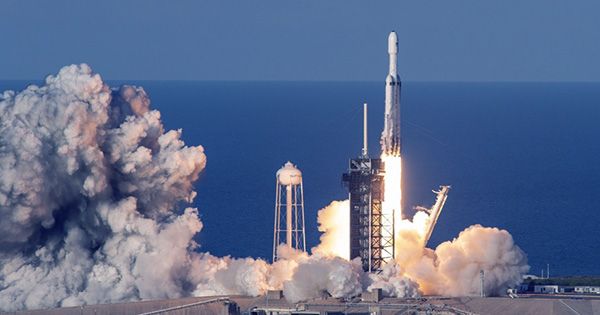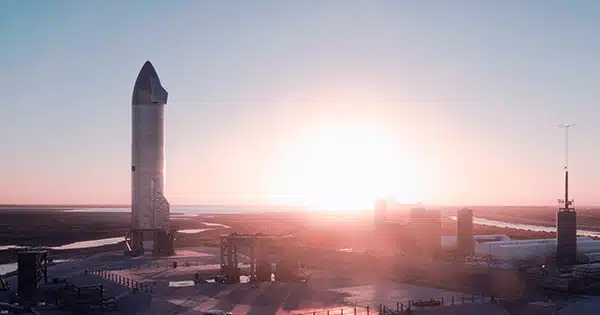On Saturday, SpaceX moved Ship 24, the most flight-ready of its Starship rockets, to a launch pad in South Texas. While a launch is not expected this week, it might happen as early as April 10, according to insiders.
The gigantic “Super Heavy” first stage of the company’s launch system was hoisted onto a launch platform at the pad earlier this week. The upper stage of the Starship will then be lifted into position above the first stage. While these spacecraft had previously been stacked for testing purposes, this should be the final time they are positioned on the launch pad before liftoff.
Technicians have just built shielding to protect the launch platform and tower from the high heat generated by the launch of Super Heavy, which is propelled by 33 Raptor engines. The launch vehicle will have about double the thrust of NASA’s Saturn V and Space Launch System rockets, the two most powerful rockets ever to reach space.

With this work nearly accomplished, the attention now shifts to the last major impediment standing between SpaceX’s enormous rocket and a launch attempt—a license from the Federal Aviation Administration. While such regulatory issues are undetermined, a source stated that considerable work is being made toward the issuing of such a license within the first two weeks of April.
Additionally, it looks like NASA is planning to utilize its high-altitude WB-57 plane to observe the Starship test flight on April 10 and 11. As part of the Artemis Moon missions, the ESA plans to deploy the Starship vehicle as a lunar lander for its astronauts, thus it is keenly monitoring SpaceX’s development with the enormous rocket.
A long time coming
In early February, SpaceX performed a hot fire test of the Super Heavy’s first stage. 31 of the rocket’s 33 engines ignited and burned normally at the time. SpaceX engineers judged that they had gathered enough data from the test to continue with a launch attempt. The rocket and upper stage were then removed to allow for work on the launch mount.
After launch, the Super Heavy rocket will sail eastward over the Gulf of Mexico from SpaceX’s Starbase launch facility. The booster will not attempt to land during this test. The Starship upper vehicle is expected to attain orbital velocity after stage separation before attempting reentry into Earth’s atmosphere over the Pacific Ocean. If all goes according to plan, it will make a controlled descent and ocean landing close to the north of the Hawaiian islands.
The business has moved more slowly at its research and test center in South Texas after a rapid-fire test campaign of launching Starship prototypes in 2020 and 2021. This is due to the fact that the business has most likely spent over $1 billion on a massive launch-and-catch tower to accommodate Starship and Super Heavy as well as ground equipment to enable the refueling of the enormous vehicles.
Because so many assets are concentrated in a tiny location near the Gulf of Mexico, SpaceX is unwilling to risk damaging equipment that it has spent more than a year developing and testing. The Starship launch campaign would be delayed for months until the region is restored. It would also likely amplify regulatory concerns voiced during the Federal Aviation Administration’s procedure to approve the South Texas site for experimental orbital launches.
















